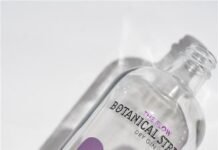
From 2 to 6 May 2023, the global metal packaging industry will meet at the world’s leading trade fair Metpack at Messe Essen in Germany to learn about innovative production processes, efficient machines and the latest trends.
An opportunity for professional exchange outside the exhibition halls will be provided by the international and top-class Metpack Conference on the second day of the trade fair, May 3.
The podium represents well-known companies along the entire production chain of the metal packaging industry: from tinplate manufacturer Nippon Steel and surface treatment specialist Plasmatreat to can manufacturer Crown Holdings, chemical suppliers Henkel and Chrotex, and coating specialist Koenig & Bauer MetalPrint. Conference participants can look forward to a total of nine exciting presentations.
Due to the pandemic, the industry did not have a platform in Essen to exchange information on current developments for six years. Since the last Metpack 2017, the metal packaging sector has developed rapidly. The Metpack Conference offers the unique opportunity to get up to date with the latest technology in a compact and efficient way, to get in touch with experts and to receive valuable input for your own business.
The conference will be opened by Daniel Abramowicz, CTO at Crown Holdings, by delivering a keynote, highlighting technical innovations in metal packaging over the last quarter century. In addition to a series of incremental improvements, such as reduced spoilage during manufacturing and reducing the weight of cans, the industry has also seen a number of breakthrough innovations that have resulted in step-changes in the can’s performance and economics.
These more radical historical innovations, as well as some future ones, will be featured in the presentation. Dimitrios Tsimpoukis, Managing director of Chrotex in Greece, will speak about cost optimization in the lacquering process by taking a holistic look at the factors underlying the quality of the lacquering operations in metal can and cap manufacturing. Highlights are thrown on the interplay among requisite lacquer properties required for high-quality can manufacturing and their trade-offs, as revealed through physicochemical concepts.
The possibilities for cost-wise optimization of the lacquering processes in can manufacturing are presented within the framework of safeguarding quality.
Plasmatreat, a technology leader from Germany, developed a technique to optimize metal surfaces such as tinplate by dramatically increasing wettability and thus enabling the direct application of UV materials. Supported by project partners in Brazil, the can maker Brasilata and the coatings manufacturer Actega, Plasmatreat will show how inline plasma jetscan significantly improve the adhesion of UV coatings.
Neil Finley, head of Global Food Safety at Henkel (UK) and Chair of the CEPE Can Sector Group, will take on the important and ever-expanding area of migration and regulation, and talk about food contact risk assessment of BPA-NI coatings for metal packaging. This presentation will discuss the challenges in performing the risk assessment, novel approaches to demonstrate safety, and how improved supply chain communication can support BPA-NI coatings for metal packaging.
Chromates are being removed from industrial manufacturing processes in order to further improve the health and safety conditions for workers and employees.
Nippon Steel Corporation from Japan has developed a new procedure to passivate tinplate surfaces without hexavalent chromium. Their presentation will include key technical information on the Process, Product and Food Contact Safety of EZPTM tinplate. All three aspects of this new substrate will be explained in detail with the basic principles of manufacturing, the structure of the zirconium passivation layer, the toxicological profile and much more.
Koenig & Bauer MetalPrint GmbH will speak about the challenges in developing the next generation of coating machines. Inline measuring technologies have advanced to the point that the re-coupling of data can lead to an automatic process, controlled in a closed loop.
Other interesting contributions will come from Stolle, SLAC and Enpack.











